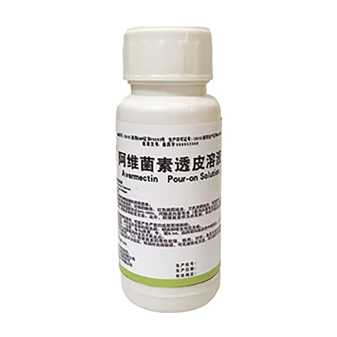- Afrikaans
- Albanian
- Amharic
- Arabic
- Armenian
- Azerbaijani
- Basque
- Belarusian
- Bengali
- Bosnian
- Bulgarian
- Catalan
- Cebuano
- Corsican
- Croatian
- Czech
- Danish
- Dutch
- English
- Esperanto
- Estonian
- Finnish
- French
- Frisian
- Galician
- Georgian
- German
- Greek
- Gujarati
- Haitian Creole
- hausa
- hawaiian
- Hebrew
- Hindi
- Miao
- Hungarian
- Icelandic
- igbo
- Indonesian
- irish
- Italian
- Japanese
- Javanese
- Kannada
- kazakh
- Khmer
- Rwandese
- Korean
- Kurdish
- Kyrgyz
- Lao
- Latin
- Latvian
- Lithuanian
- Luxembourgish
- Macedonian
- Malgashi
- Malay
- Malayalam
- Maltese
- Maori
- Marathi
- Mongolian
- Myanmar
- Nepali
- Norwegian
- Norwegian
- Occitan
- Pashto
- Persian
- Polish
- Portuguese
- Punjabi
- Romanian
- Russian
- Samoan
- Scottish Gaelic
- Serbian
- Sesotho
- Shona
- Sindhi
- Sinhala
- Slovak
- Slovenian
- Somali
- Spanish
- Sundanese
- Swahili
- Swedish
- Tagalog
- Tajik
- Tamil
- Tatar
- Telugu
- Thai
- Turkish
- Turkmen
- Ukrainian
- Urdu
- Uighur
- Uzbek
- Vietnamese
- Welsh
- Bantu
- Yiddish
- Yoruba
- Zulu
7 月 . 22, 2024 00:45 Back to list
Understanding Ivomec Dosage Guidelines for Effective Pig Health Management and Treatment Options
Ivermectin Dosage for Pigs A Comprehensive Guide
Ivermectin is a broad-spectrum antiparasitic medication that is widely used in veterinary medicine. It is particularly effective against a variety of internal and external parasites that can affect pigs, such as roundworms, lice, and mange mites. As a pig producer or veterinarian, understanding the appropriate dosage of ivermectin is crucial for ensuring the health and well-being of swine. This article provides a comprehensive guide to the dosage of ivermectin for pigs.
Understanding Ivermectin
Ivermectin belongs to a class of drugs known as avermectins, which are derived from the bacterium *Streptomyces avermitilis*. It works by binding to specific chloride channels found in the parasite's nervous system, leading to paralysis and death of the parasite. Given its effectiveness, it is used not only in pigs but also in a variety of other livestock, pets, and even humans for certain conditions.
Dosage Recommendations
The dosage of ivermectin for pigs varies based on the specific formulation of the drug being used. Ivermectin is available in several forms, including injectable solutions, oral pastes, and pour-on formulations. The most commonly recommended dosage for pigs is approximately 200 micrograms per kilogram of body weight (μg/kg). However, it is important to consult with a veterinarian for precise dosing tailored to the specific needs of the livestock.
Injectable Ivermectin
For injectable formulations, the dosage typically ranges from 1.0 to 2.0 mL per 100 kg of body weight. The injection should be given subcutaneously or intramuscularly, taking care to avoid the muscle's largest areas to reduce pain or discomfort at the injection site. Always ensure that the injection is delivered in a clean, sterile manner to prevent infections.
ivomec dosage for pigs

Oral Formulations
When using oral ivermectin formulations, dosing typically aligns with the same concentration of 200 μg/kg. It can be administered in feed or as a drench. Ensure pigs receive the correct dosage for the weight category they fall into, as underdosing can lead to ineffective parasite control while overdosing may cause unwanted side effects.
Pour-On Formulations
Pour-on ivermectin is also an option, especially in larger operations where handling pigs can be cumbersome. The dosage and administration will depend on the brand of the pour-on formulation, and it is important to follow label instructions meticulously.
Safety and Side Effects
Ivermectin is generally considered safe for pigs when used as directed. However, potential side effects can occur and may include transient neurological signs such as wobbling or loss of coordination. These effects are rare and typically resolve quickly. It is vital to observe pigs post-administration and to seek veterinary assistance if any adverse reactions are noted.
Conclusion
Using ivermectin as part of a comprehensive parasite control program can significantly enhance the health and productivity of pigs. Proper dosing is critical to ensure efficacy while minimizing risks. Always consult with a veterinarian to tailor a treatment plan for specific herd needs. With careful management and preventive measures in place, producers can maintain healthier swine and optimize their production efforts. Remember that responsible use of veterinary medications is not only a legal requirement but also essential for the sustainability of livestock farming.
-
The Power of Radix Isatidis Extract for Your Health and Wellness
NewsOct.29,2024
-
Neomycin Sulfate Soluble Powder: A Versatile Solution for Pet Health
NewsOct.29,2024
-
Lincomycin Hydrochloride Soluble Powder – The Essential Solution
NewsOct.29,2024
-
Garamycin Gentamicin Sulfate for Effective Infection Control
NewsOct.29,2024
-
Doxycycline Hyclate Soluble Powder: Your Antibiotic Needs
NewsOct.29,2024
-
Tilmicosin Premix: The Ultimate Solution for Poultry Health
NewsOct.29,2024













